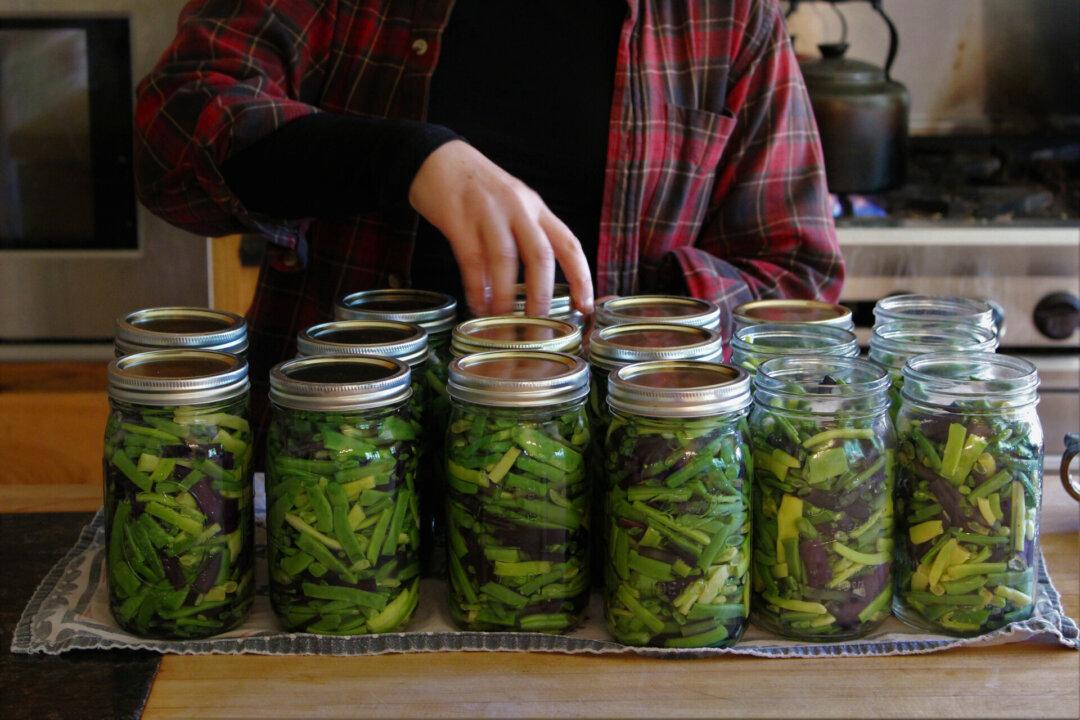This recipe is a raw pack method of pressure canning; raw veggies get packed into the jar and then topped with boiling liquid. The raw food cooks during the canning process. I love this method because it saves a lot of time in the kitchen.
Makes approximately 7 quart jars or 14 pint jars
- 7 pounds raw green beans
- Water
- Salt
- Pressure canner with canning rack
- 7-quart or 14-pint mason jars
- 2-part canning lids to fit your jars
- Jar lifters
- Tea kettle

